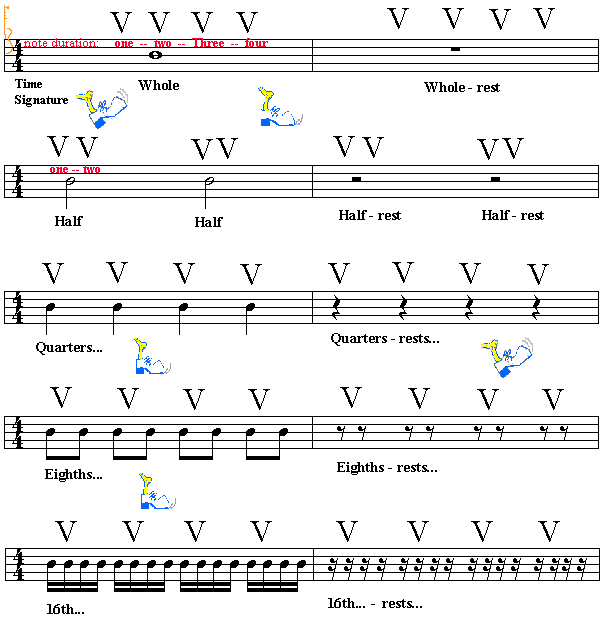The
Time
Music sounds - as they heard in compositions - are organized in tempos and rhythmic
structures we call Time.
The time signature - on the first staff to the left, shows us how the time is organized -
within one measure - into meter units and their qualities.
For example: If the Time signature shows 4/4; the upper 4 means that you will
have four unit-meters in one measure, while the lower 4,
means that each one will last a quarter. Or if you have 3/4, the upper 3 means you will have
three unit-meters in a measure, the lower 4
means that each one will last one quarter, etc.
The Beat
Without knowing or understanding too much about time and time signatures... we can always
feel the music's beats. The feeling of the beats is our immediate self-reaction and it
changes accordingly with the music and its styles.
We can easily follow it with our leg as it moves up and down as we listen to the music.
That is why I strongly recommend adopting the BEAT as the principal
measurable time meter. It is easier to do it that way and you can be your own teacher just
by moving your leg up and down (in fact we shall say down and up because we will always
start from up).
Please look at the animation below: we are getting a "V" as we move our leg up and down.

Notes and
rests durations
See how we can measure the notes' duration just by using the "V" as it shaped by our leg's movement.
Click each of
the note heads below to hear their durations... When you hear the sound, try to
fit in the "V" leg movements according to the beat
numbers.

DOTTED
NOTES
A dot, next to the note head, at the right - refer to the note's duration! The dot means
that you will have to add duration to that note. The addition will be half of the
note's normal duration:



|





